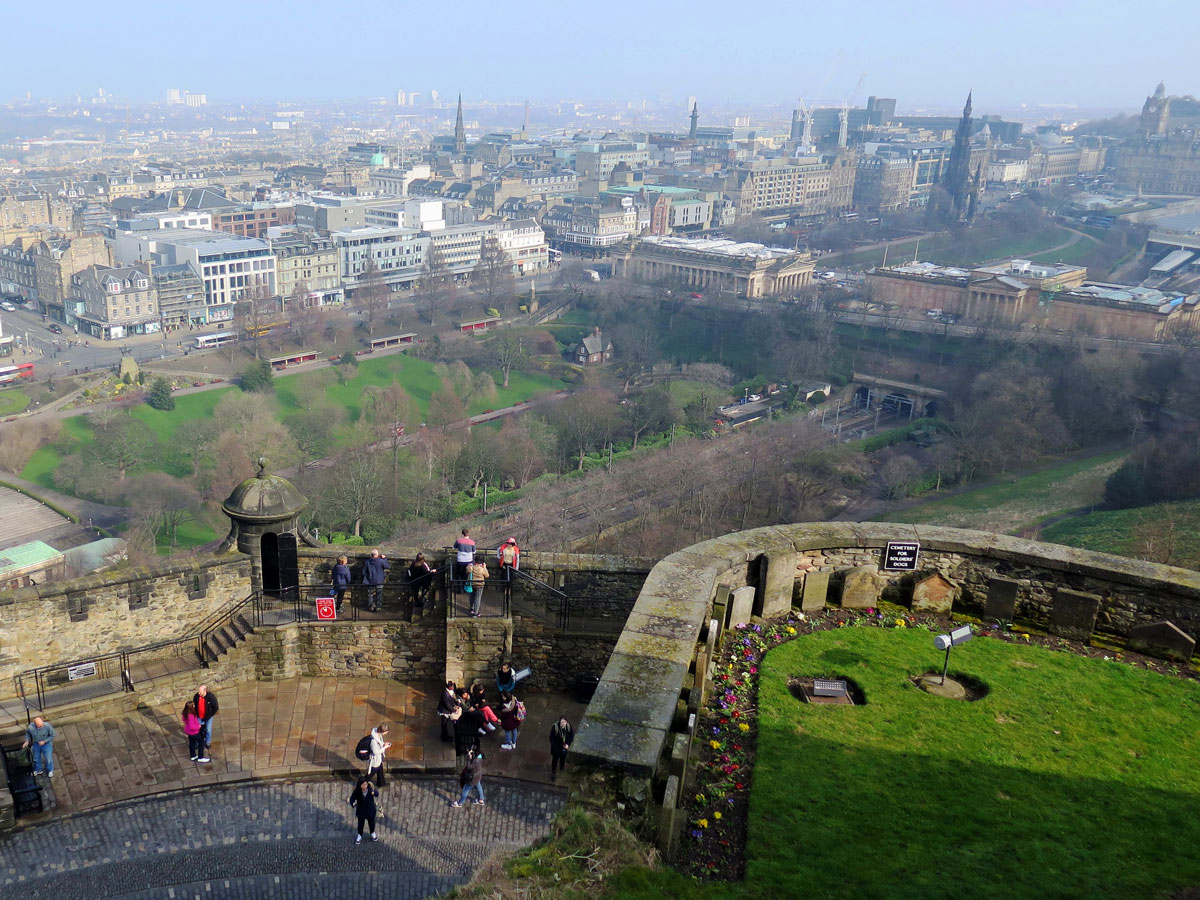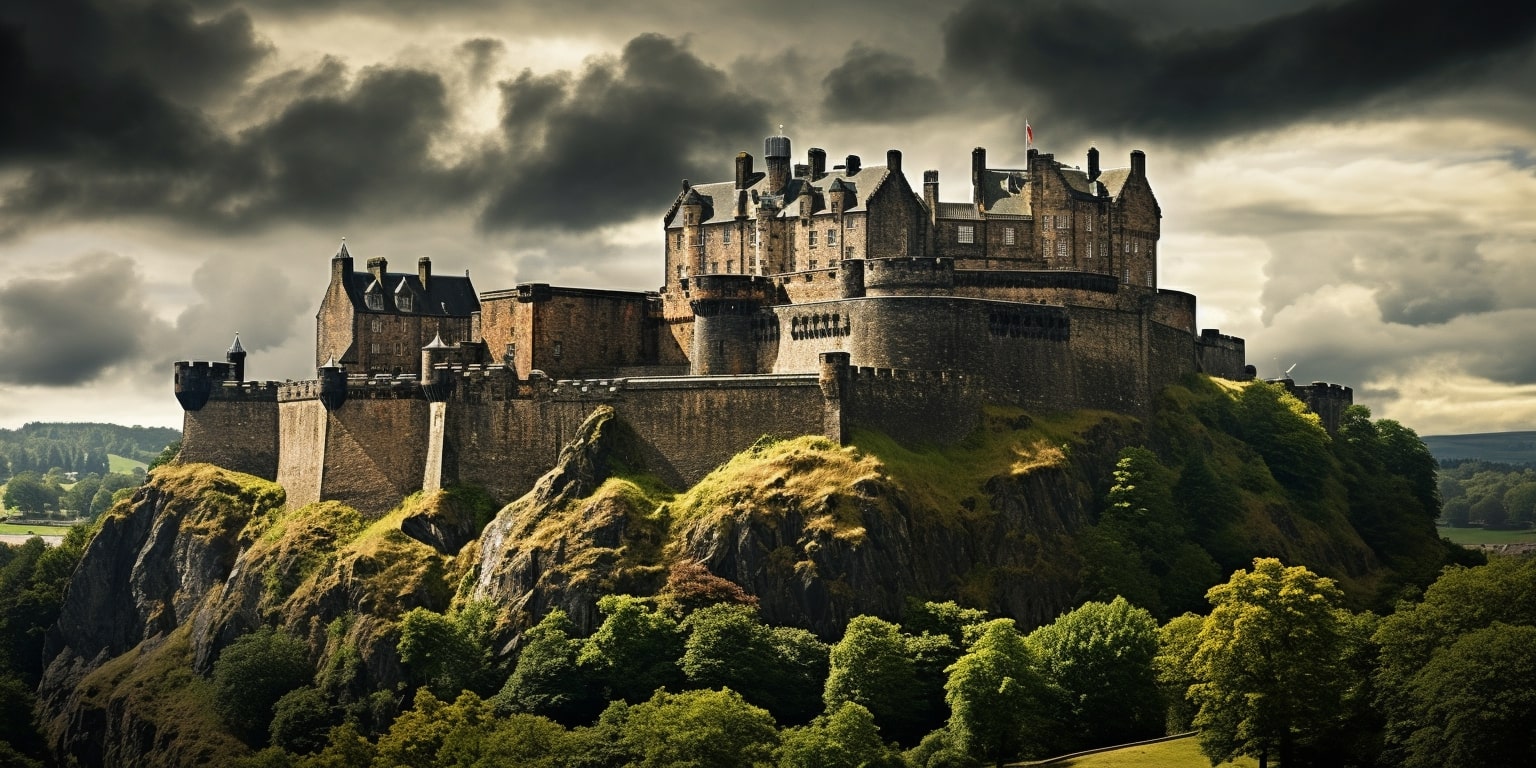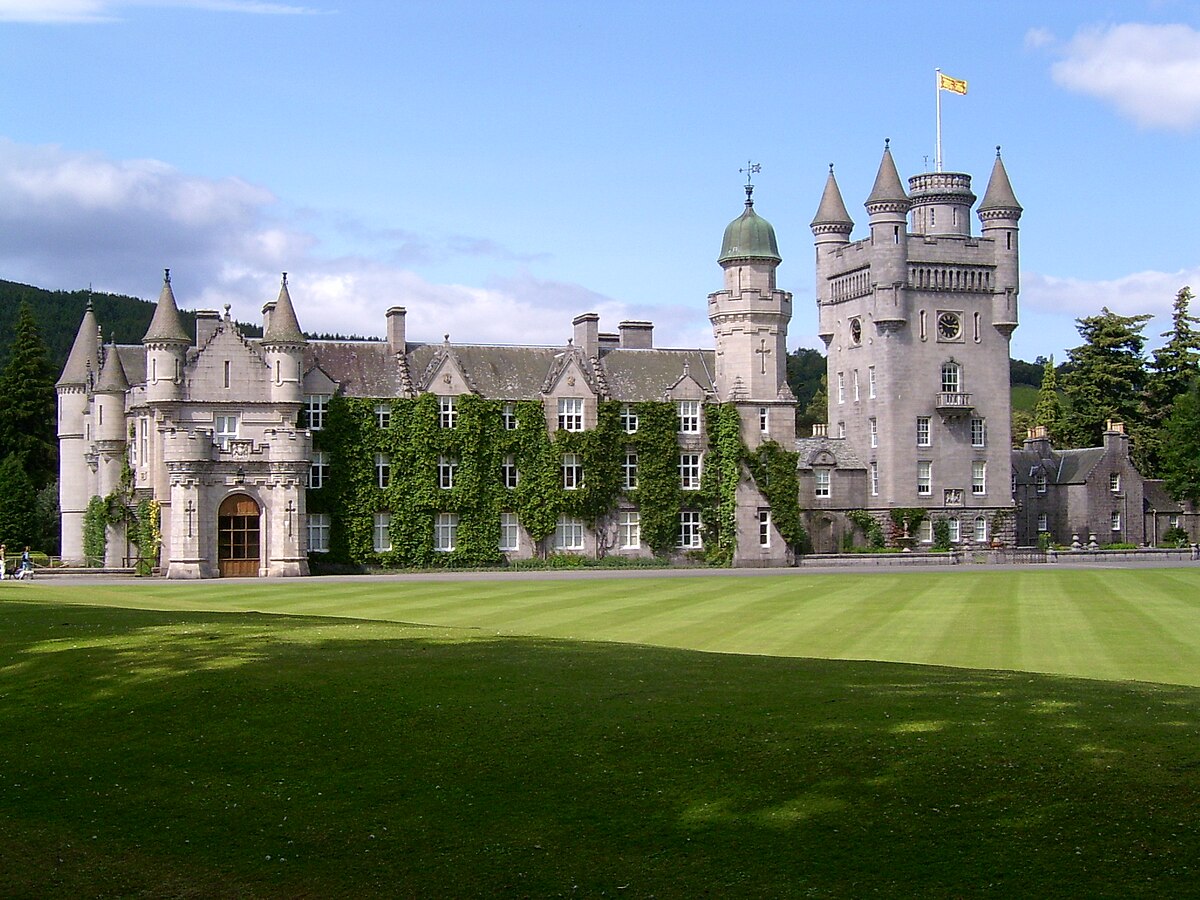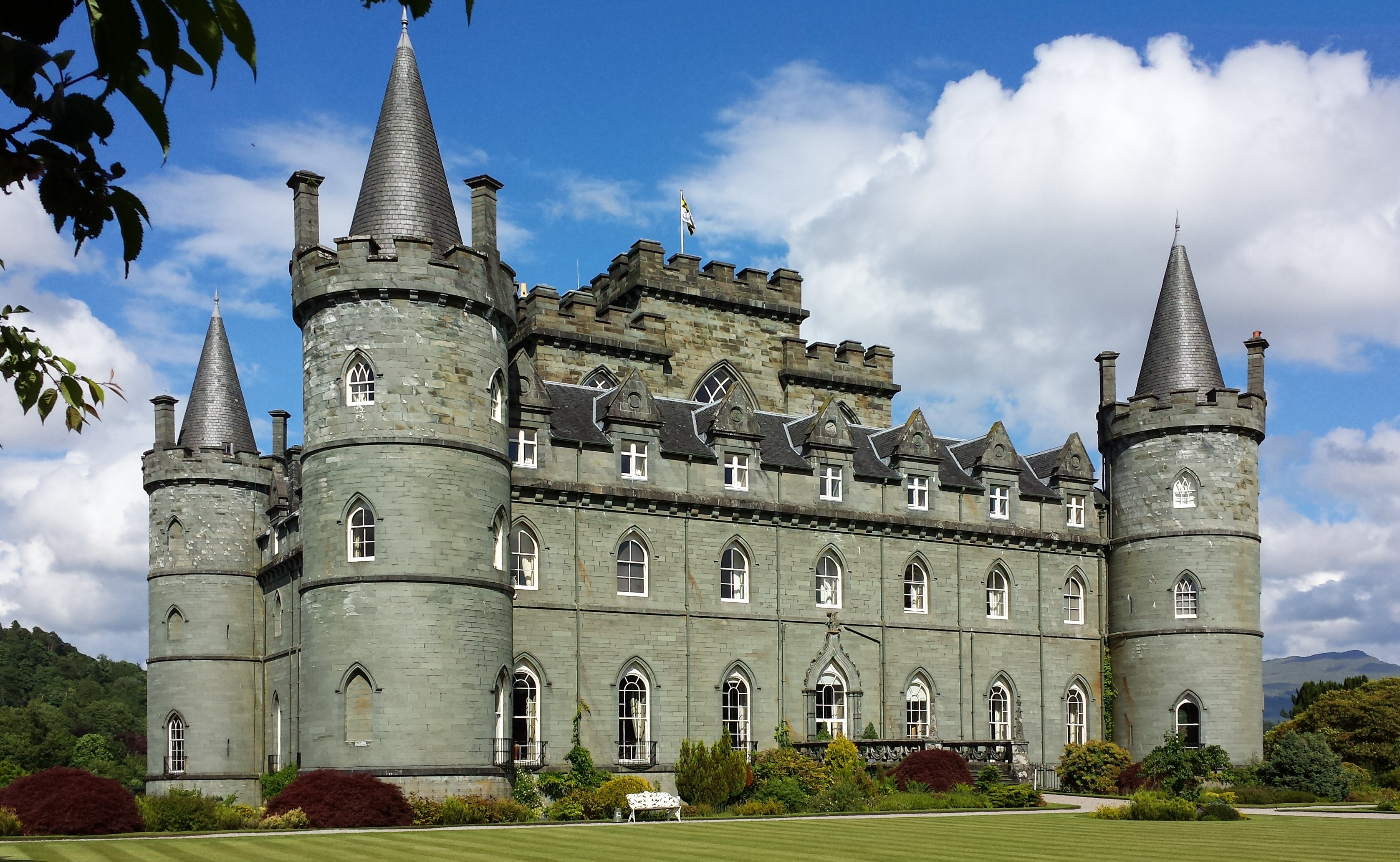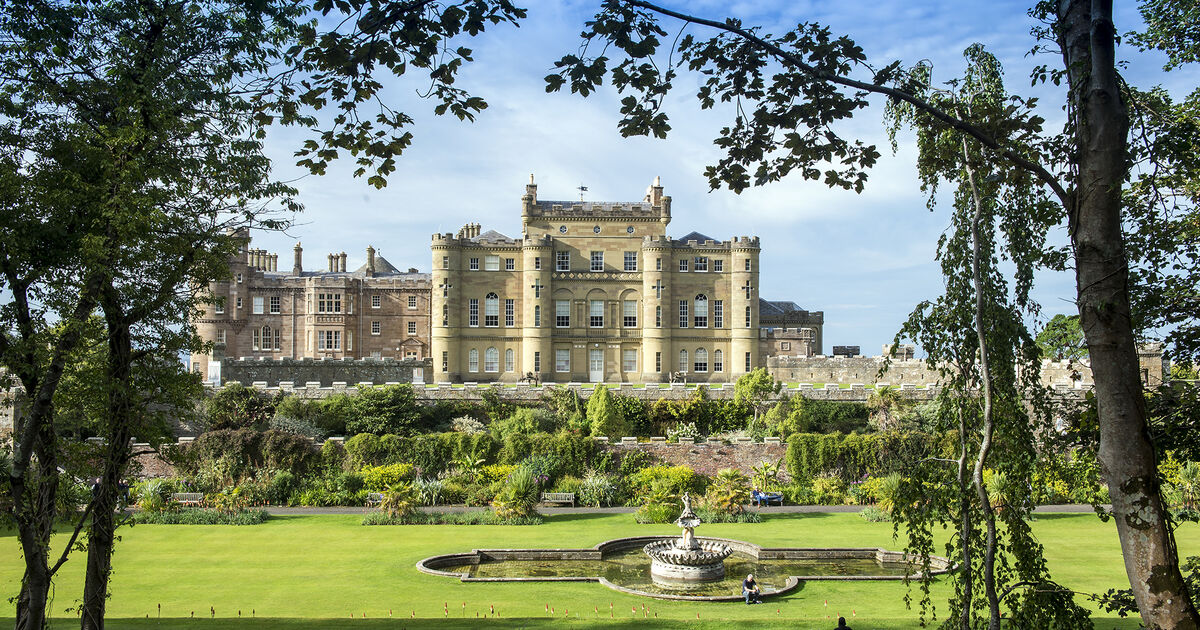The Glorious Heritage Of The Historic Castles Of Scotland
Scotland's landscape is adorned with a tapestry of historic castles, each telling tales of battles, royalty, and centuries gone by. We are going to discover from windswept cliffs to serene lochs, these architectural marvels stand as testaments to the country's rich history and incredible heritage of some of the most important historic castles of Scotland.
George EvansFeb 15, 202426 Shares5184 Views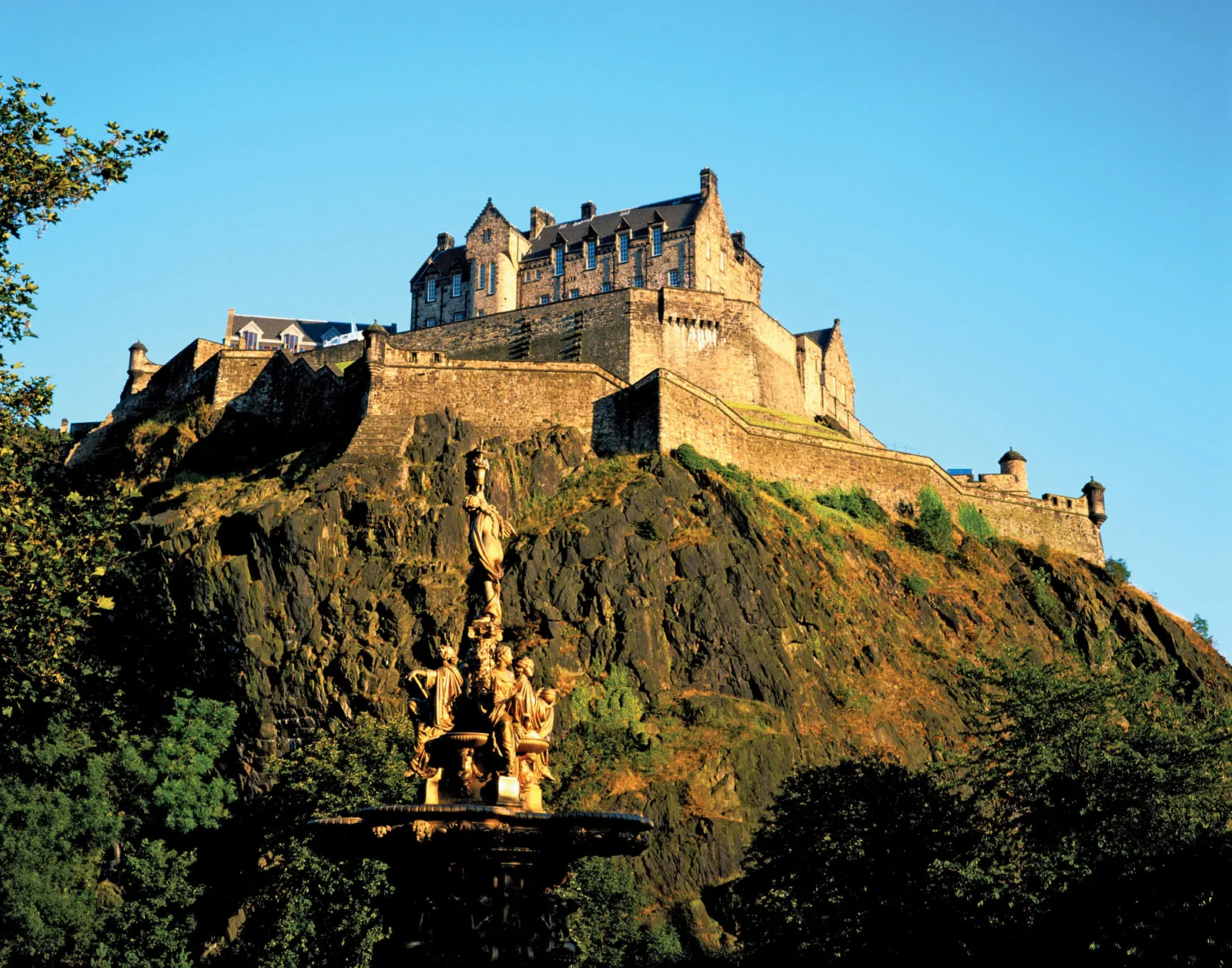

Scotland's landscape is adorned with a tapestry of historic castles, each telling tales of battles, royalty, and centuries gone by. We are going to discover from windswept cliffs to serene lochs, these architectural marvels stand as testaments to the country's rich history and incredible heritage of some of the most important historic castles of Scotland.
Edinburgh Castle
Nestled imperiously atop the rugged promontory of Castle Rock, Edinburgh Castle stands as the quintessence of Scottish regality, a living testament to the nation's storied past. Its origins, rooted in the annals of the 12th century, bestow upon it an aura of historical richness that transcends the passage of time.
The architectural magnificence of Edinburgh Castle is a symphony of medieval and Renaissance influences, seamlessly interwoven into a tapestry that unfolds across the centuries. Each stone, weathered by the winds of time, whispers tales of epochs gone by, bearing witness to the evolving architectural styles that have shaped the Scottish landscape.
As the sentinel of the capital city, this citadel has withstood the tides of history, offering an unparalleled vantage point from which to observe the ebb and flow of political fortunes within the nation. Edinburgh Castle has been a silent witness to the pageantry of royal ceremonies, the fervor of military campaigns, and the intrigues of noble courts.
Within its venerable walls lies a repository of regal opulence – the Crown Jewels of Scotland. Safeguarded within the inner sanctum of the castle, these artifacts narrate their own chapter in the nation's saga, embodying the sovereignty and enduring resilience of the Scottish people.
Perched on Castle Rock, Edinburgh Castle not only dominates the skyline of the city but also commands respect as a symbol of Scotland's enduring grandeur. It invites visitors to traverse the cobbled paths of history, to stand in awe of its towering fortifications, and to marvel at the architectural prowess that has made it a focal point of national pride.
Stirling Castle
Elevated majestically upon a volcanic crag, Stirling Castle emerges as a resounding ode to historical significance, etched into the very soul of Scotland's narrative. The castle's formidable perch not only offers a strategic advantage but also imbues it with an undeniable presence, a sentinel of the nation's tumultuous past.
The architectural narrative of Stirling Castle unfolds as a harmonious amalgamation of medieval and Renaissance styles, a testament to the enduring craftsmanship that spans centuries. The stone walls, weathered by the ages, silently bear witness to the ebb and flow of time, encapsulating the essence of Scotland's diverse historical epochs.
The Great Hall and Royal Palace within Stirling Castleserve as veritable time capsules, echoing with the resonances of the Renaissance period's opulence. The Great Hall, a majestic expanse of architectural splendor, stands as a witness to royal ceremonies, banquets, and the grandeur of courtly life. It is a space where history reverberates through the vaulted ceilings, adorned with intricate detailing that captures the spirit of a bygone era.
The Royal Palace, a manifestation of regal elegance, further enriches the narrative of Stirling Castle. Its chambers, once graced by royalty, unfold tales of political machinations, royal intrigues, and the opulence that defined Renaissance living. The intricate craftsmanship of the period is palpable within these walls, providing a glimpse into the artistic and cultural zenith of Scotland's historical zenith.
Beyond its architectural splendor, Stirling Castle has stood witness to pivotal events that have left an indelible mark on the nation's saga. From the Wars of Independence, where William Wallace and Robert the Bruceplayed their roles, to the seismic shifts in political power, this fortress remains an enduring symbol of Scotland's resilience.
Balmoral Castle
Balmoral Castle stands as a distinguished Scottish residence, intimately entwined with the narrative of the British Royal Family. While its roots trace back to the 15th century, the castle we know today emerged from a royal love affair with the region and its people, catalyzed by Queen Victoriaand Prince Albert during a fateful visit.
The original Balmoral Castle, deemed too modest for the royal couple's affections, paved the way for Prince Albert's visionary undertaking. In 1852, the Royal Family acquired the estate, and Albert, with his architectural acumen, orchestrated the design of the present-day castle and its enchanting grounds. The construction of the new edifice commenced in the summer of 1853, strategically positioned a mere 100 yards from its predecessor.
By 1856, the regal vision came to fruition with the completion of the new Balmoral Castle, a testament to the Royal Family's enduring connection with the Scottish Highlands. The old castle, standing as a relic of bygone days, gracefully yielded to the new, embodying the evolving tastes and aspirations of a royal love affair with the region.
For Queen Victoria and Prince Albert, Balmoral became more than a mere residence – it was a Highland sanctuary, a retreat where they reveled in weeks of respite each year. Even after Albert's passing, Queen Victoria continued to immerse herself in the tranquility of Balmoral, dedicating up to four months annually to the solace of the Scottish Highlands.
While Balmoral Castle remains a cherished private residence, its historical and cultural significance is celebrated through restricted opening times. Visitors, enraptured by the allure of royalty against a Highland backdrop, are welcomed to explore the grounds and revel in the architectural opulence that encapsulates the spirit of a bygone era.
However, it's important to note that such regal splendor comes with its own protocols. Restricted opening times and entrance charges apply, adding an air of exclusivity to this Highland haven. For those eager to traverse the halls once graced by monarchs or stroll through manicured gardens echoing with whispers of royal conversations, a visit to Balmoral Castle promises an immersive journey into the intimate relationship between royalty and the resplendent Scottish Highlands.
Inveraray Castle
Gazing upon the intricate façade of Inveraray Castle, the ancestral seat of the Dukes of Argyll, one is immediately captivated by the symphony of architectural refinement that conceals a world of sumptuous interior opulence. This venerable castle stands as a testament to the neoclassical grandeur that reached its zenith in the 18th century.
Step into the resplendent interiors of Inveraray Castle, and you'll find yourself immersed in the pinnacle of neoclassical elegance. The Drawing Room, a sanctuary of refinement, unfolds before you, adorned with priceless Beauvais tapestries that weave tales of artistry and cultural richness. Each thread in these tapestries tells a story, creating a visual masterpiece that transcends time.
Beyond the tapestries, the castle's windows open to outstanding views of Loch Fyne, inviting you to revel in the breathtaking Scottish landscapes that surround this architectural gem. It's not merely a castle; it's a canvas where nature and human artistry harmonize, offering an experience that transcends the mere visual.
Inveraray Castle, with its seamless blend of architectural finesse and natural splendor, stands as an embodiment of the aristocratic lifestyle of bygone eras. It's not just a residence; it's a living testament to the cultural and artistic pursuits that defined the 18th century, encapsulating the essence of a regal legacy.
While the intricate façade hints at the castle's historical significance, the sumptuous interior and the breathtaking views of Loch Fyne unveil the layers of grandeur that await visitors. Inveraray Castle beckons admirers of art, history, and nature to traverse its halls, where every step is a journey through time.
As you explore the elegance embodied in stone, it's important to note that Inveraray Castle, although a public treasure, operates under the auspices of the Dukes of Argyll. Visitors are granted a curated glimpse into a world where aristocratic refinement meets the sublime beauty of the Scottish Highlands.
Culzean Castle
Behold Culzean Castle, a Georgian marvel that stands as a rockstar overlooking the scenic expanse of the Firth of Clyde. Constructed in the late 1700s, this castle is not just a structure; it's a symphony of architectural elegance, offering the whole package – opulent interiors, fanciful gardens, and a view that beckons lyrical expressions.
Built during the late 18th century, Culzean Castle encapsulates the essence of Georgian architectural finesse. Its imposing silhouette against the Scottish sky is a visual ode to the opulence that defined the era. Culzean is not merely a residence; it's a testament to the extravagant tastes and lifestyles of the 18th-century Scottish aristocracy.
Step through the castle's grand entrance, and you'll find yourself immersed in opulent interiors that rival the grandeur of any regal abode. The Drawing Rooms, adorned with period-specific furnishings and embellishments, resonate with the echoes of a bygone era. It's not just a castle; it's a living canvas that narrates the stories of the aristocracy who once called it home.
As you wander through the fanciful gardens surrounding Culzean Castle, the meticulously manicured landscapes unfold like a work of art. Each pathway, each bloom, and each architectural feature contributes to a visual spectacle that transcends mere horticulture. It's a testament to the 18th-century passion for landscaping and the creation of picturesque vistas.
And then, there's the view – a panoramic spectacle that stretches across the Firth of Clyde. It's the kind of vista that inspires the urge to break into spontaneous poetry, capturing the timeless beauty of the Scottish landscape. Culzean Castle, perched strategically to maximize the allure of its surroundings, beckons visitors to bask in the sublime views that once captivated the hearts of Scottish aristocracy.
In contemporary terms, Culzean Castle could be likened to the "MTV Cribs" of 18th-century Scottish aristocracy – a glamorous showcase of wealth, taste, and architectural prowess. It's not just a historical monument; it's a living representation of an era when every detail, from the lavish interiors to the expansive views, spoke volumes about the social and cultural milieu of the time.
Historic Castles Of Scotland - FAQs
How Many Castles Are There In Scotland?
Scotland is believed to host over 1,500 castles spread across its picturesque terrains, with some dating back to the 12th century. While some lie in ruins, others have undergone restoration, becoming vibrant living museums that appeal to enthusiasts of history, architecture, and well-maintained gardens.
What Is The Most Beautiful Castle In Scotland?
Stirling Castle is often hailed as the most beautiful in Scotland due to its strategic hilltop location, offering breathtaking views of the surrounding landscapes. The castle's architectural diversity, blending various styles from different periods, contributes to its aesthetic appeal. Careful restoration has preserved intricate details, and the castle's structures, such as the Great Hall and Renaissance Palace, showcase exceptional craftsmanship. The meticulously maintained gardens and grounds further enhance its charm, making Stirling Castle a captivating destination for history enthusiasts and admirers of both architecture and well-manicured landscapes.
What's The Oldest Castle In Scotland?
Castle Sween stands as the oldest confirmed castle on the Scottish mainland. Its origin and the neighboring sea loch are named after Suibhne (Sven) 'the Red,' an Irish descent chieftain and forebear of the MacSweens.
Conclusion
These architectural masterpieces, perched on cliffs, nestled on islands, or standing prominently in city centers, invite scholarly exploration of Scotland's past. As a history graduate, delving into the narratives inscribed within these venerable structures offers a nuanced understanding of the socio-political, cultural, and architectural evolution of this remarkable nation.
For more information on travel essentials, including health coverage, consider consulting the European Health Insurance Card (EHIC).
Latest Articles
Popular Articles
